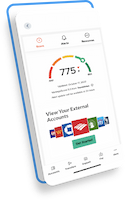They say two things are guaranteed in life: death and taxes.
But for most of us living in the modern age, there’s another guarantee, too: debt. From student loans to auto loans and revolving credit card balances in between, the average American is at least a little bit in the hole, holding an average of more than $6,0001 in credit card debt alone.
Successfully applying for—and paying off—a mortgage can be challenging under any circumstances, but particularly when you’re already beholden to a number of lenders, not to mention the government.
But that doesn’t mean it’s impossible! Thanks to alternative mortgage products similar to non-QM loans or no-doc mortgages, even those with relatively high debt-to-income, or DTI, ratios can qualify for a home loan under the right circumstances.
Here’s what you need to know.
Can I qualify for a mortgage if I’m already in debt?
The short answer: Possibly!
The slightly longer answer: You may be able to but the process might not look exactly like it would with a conventional home loan. Some lenders will offer mortgages to borrowers who have considerable debt, or whose tax documentation doesn’t quite line up with what’s normally expected (such as freelancers who file each year with W-9s instead of W-2s). But there may be a trade-off by way of a larger required down payment or elevated minimum credit score.
Still, for certain borrowers, it may be easier to amass a higher down payment or maintain a higher credit score than to pay down significant debt before applying for a mortgage (which will be an additional debt)—especially if you’re wanting to hop into this market while rates are still historically low. Plus, certain lenders (including Quontic!) will accept gift funds for up to 100% of your down payment and closing costs, which makes bridging the gap a whole lot easier.2
What if I have a non-traditional tax return?
Being in debt is only one factor of many that might make you feel locked out of the conventional mortgage marketplace. If you’re a freelancer, small business owner, foreign national or anyone whose tax documentation looks a little different from a traditional borrower’s, you might have fears about your ability to borrow.
The good news is, as the economy shifts more and more toward gig work and contracting gigs, lenders are coming up to speed on what’s reasonable to expect from applicants—and many lenders will accept alternative proof of income, such as two years of bank statements along with non-W-2 returns.
If you own a small business, you may also be required to show profit-and-loss statements, business bank statements, and other materials in order to verify your income and ability to repay a mortgage loan.
How can a Non-Traditional Mortgage qualify me for a mortgage?
If you’re a borrower with alternative tax documentation or a high level of standing debt, but you still have the wherewithal to reliably pay a mortgage, Quontic may be able to help. As one of only 3% of U.S. banks with a CDFI, or Community Development Financial Institutions Fund, certification, it’s part and parcel of our mission to match qualified borrowers with the financial products they need—even if they’re part of an underserved market.
Our Non-Traditional Mortgages2 is specifically designed for borrowers with non-traditional backgrounds or irregular incomes, and may work for you if you’re dealing with those two inevitabilities: debt and taxes. We accept gift funds for your down payment and closing costs, and we require little income verification documentation (and accept many different types of documents as part of our qualification process).
In addition, we also offer a variety of other types of mortgage products, including FHA loans, VA loans, conventional loans and more.2 For more information, reach out to one of our mortgage specialists today so we can find the best program for you and walk you through the process step by step!
Disclaimer:
1“Average Credit Card Debt in America: 2021” by Joe Resendiz. https://www.valuepenguin.com/average-credit-card-debt.
2Quontic Bank is not affiliated with or acting on behalf of or at the direction of the Federal Housing Authority (FHA), Veterans Affairs (VA) or any government agency or government sponsored entity. All lending products are subject to approval. Rates, program terms & conditions are subject to change without notice. Not all products are available in all states or for all amounts. This does not represent an offer to enter into a loan agreement. Other requirements, restrictions & limitations apply. Information is accurate as of April 5, 2022 & is subject to change without notice.





